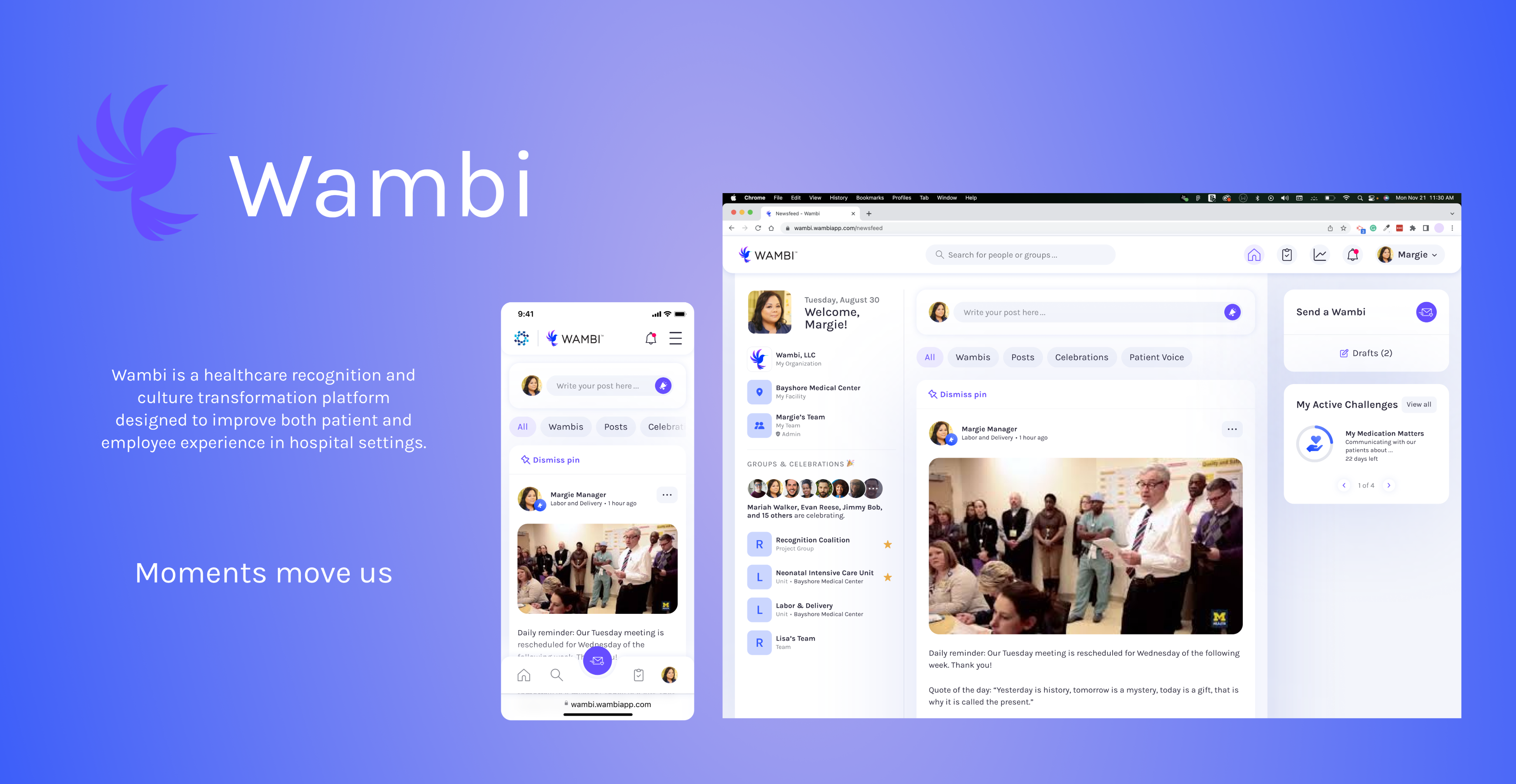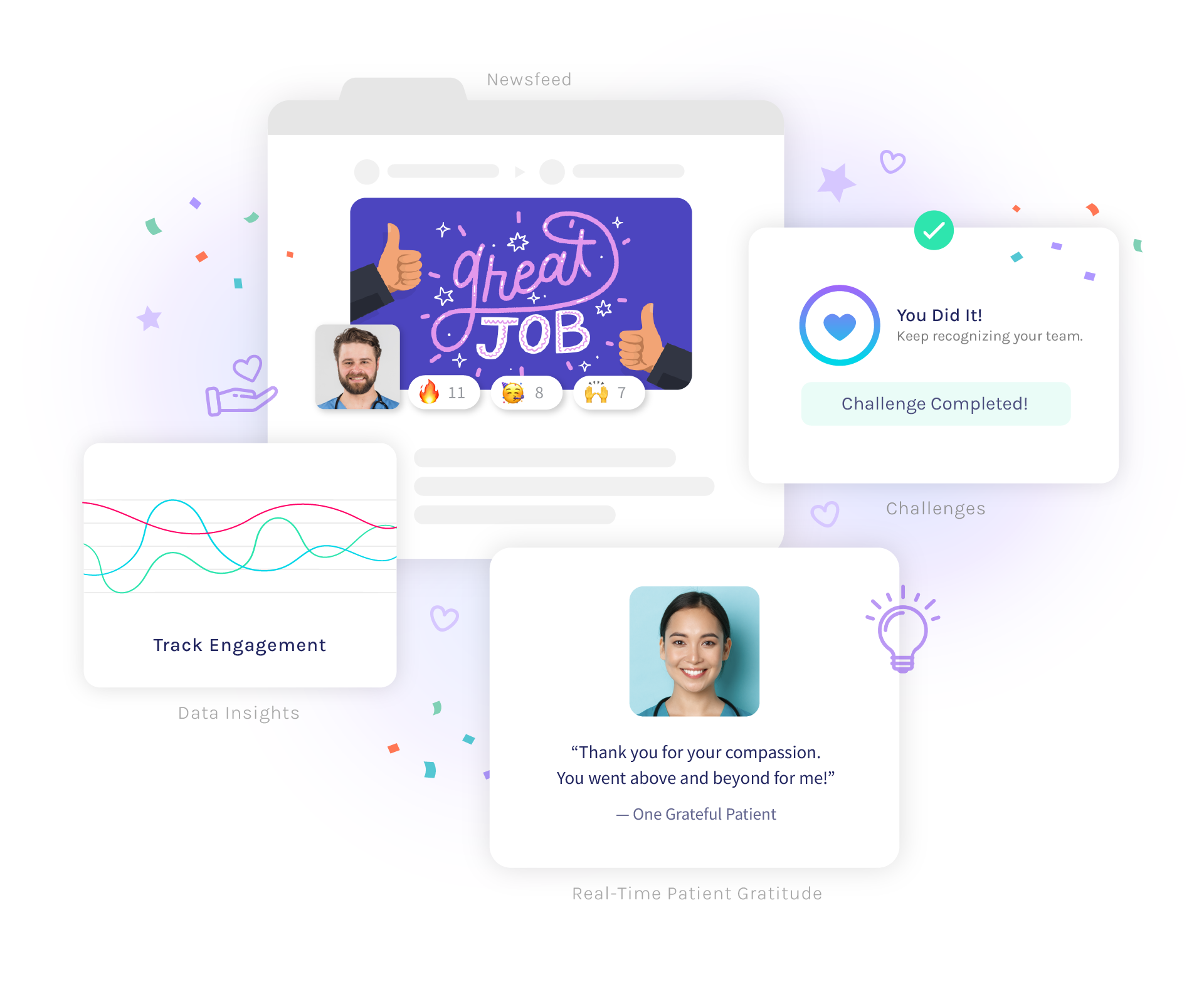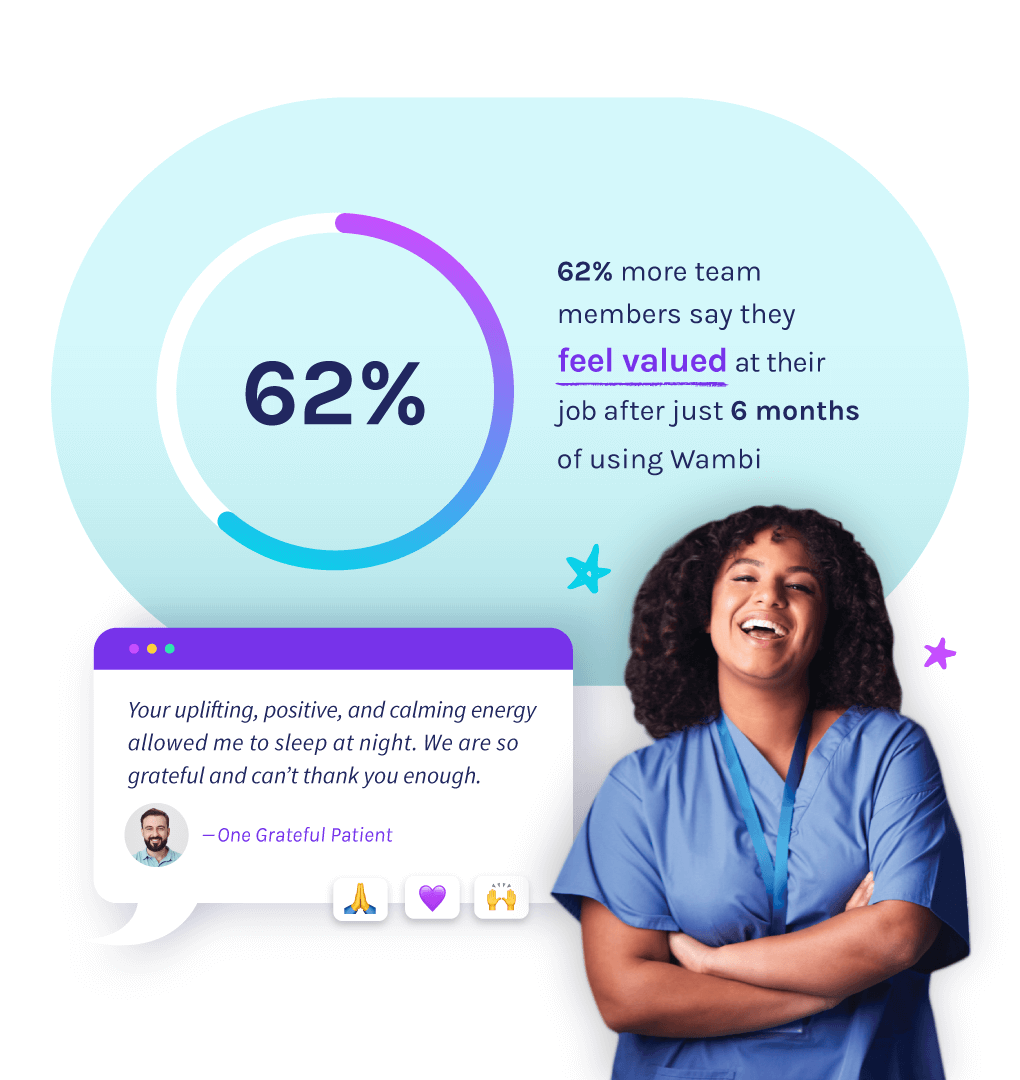
2a
Wambi’s goal
Wambi’s Mission:
Transform healthcare culture through real-time recognition, enabling patients, peers, and leaders to uplift and connect in the moment.
Empower healthcare workers to feel valued and purposeful, using data-informed feedback loops and gamified engagement to reframe every interaction as meaningful.
Support leadership with insights that drive retention and experience improvement, combining performance dashboards, secure integrations, and analytics to align business strategy with genuine human connection.
4a
Key Features
05
A Case Study
© Sejal’s Portfolio
All Rights Reserved
Back Home
Download Resume
Contact
Project Overview
01
Problem
02
Features
03
My Role
04
Case Study
05
01
Clients
During my time at Wambi, some major clients we worked with were, Methodist Hospital of Southern California, Promedica, Marshfield Clinic Health System, Kaiser Permanente, Hackensack Meridian Health, Indiana University Health, Stanford Medicine Children’s Health

02
Problem
Since 2021, staffing challenges have ranked as the number one concern for hospital CEOs according to the American College of Healthcare Executives. Facing personnel shortages and staff burnout, health systems need to prioritize caring for their teams and building better cultures to retain their staff. Burnout and turnover cost the U.S. healthcare system billions of dollars annually—with average turnover costs per RN exceeding $61,000, and hospitals often operating with 15–16% nurse vacancy rates
2a
Wambi’s goal
Wambi’s Mission:
Transform healthcare culture through real-time recognition, enabling patients, peers, and leaders to uplift and connect in the moment.
Empower healthcare workers to feel valued and purposeful, using data-informed feedback loops and gamified engagement to reframe every interaction as meaningful.
Support leadership with insights that drive retention and experience improvement, combining performance dashboards, secure integrations, and analytics to align business strategy with genuine human connection.
03
Features
Wambi enables real-time, patient and peer recognition to boost employee morale and reduce burnout in healthcare settings. It features patient-driven feedback, team and manager dashboards, performance analytics, and gamified challenges to encourage daily engagement. The platform is HIPAA-compliant, supports secure integrations like SSO and HRIS automation, and offers flexible setup with custom branding for seamless deployment.
4a
Key Features

Real time recognition, Challenges, Data Insights

Patient Feedback
04
My Role
Design Leadership & Strategy
-Led the introduction of data-driven design practices and user testing frameworks.
-Defined and executed research strategies to support decision-making across product teams.
User-Centered Interface Design
-Designed interfaces to address healthcare burnout, incorporating real-time patient and peer feedback.
-Utilized and expanded design system libraries, built and tested complex UI components.
-Rapidly prototyped features to support agile discussions and iterat
Cross-Functional & Remote Collaboration
-Worked closely with developers, stakeholders, client success, and marketing teams.
-Managed seamless collaboration across remote teams to deliver on business goals and timelines.
Platform Evolution & Gamification
-Contributed to the transition from web to mobile app functionality.
-Integrated gamification features to create a more engaging and rewarding user experience.
Reflection
I noticed that many design requirements were set by stakeholders—like hospital owners—who weren’t the actual users. As a recent graduate, I was eager to drive decisions through user research and suggested we invest time in interviews. But in a fast-paced, resource-limited startup, that wasn’t feasible. I initially struggled to define design requirements, but with constructive feedback, I adapted. I ran internal user tests with non-design colleagues and used BI tools like Google Analytics to guide data-informed decisions. This helped me balance my design process with the company’s constraints and taught me how to align user needs with business goals.
05
A Case Study
This is all I can share, this work is under NDA. Reach out for more!
© Sejal’s Portfolio
All Rights Reserved
01
Clients
During my time at Wambi, some major clients we worked with were, Methodist Hospital of Southern California, Promedica, Marshfield Clinic Health System, Kaiser Permanente, Hackensack Meridian Health, Indiana University Health, Stanford Medicine Children’s Health

02
Problem
Since 2021, staffing challenges have ranked as the number one concern for hospital CEOs according to the American College of Healthcare Executives. Facing personnel shortages and staff burnout, health systems need to prioritize caring for their teams and building better cultures to retain their staff. Burnout and turnover cost the U.S. healthcare system billions of dollars annually—with average turnover costs per RN exceeding $61,000, and hospitals often operating with 15–16% nurse vacancy rates
2a
Wambi’s goal
Wambi’s Mission:
Transform healthcare culture through real-time recognition, enabling patients, peers, and leaders to uplift and connect in the moment.
Empower healthcare workers to feel valued and purposeful, using data-informed feedback loops and gamified engagement to reframe every interaction as meaningful.
Support leadership with insights that drive retention and experience improvement, combining performance dashboards, secure integrations, and analytics to align business strategy with genuine human connection.
03
Features
Wambi enables real-time, patient and peer recognition to boost employee morale and reduce burnout in healthcare settings. It features patient-driven feedback, team and manager dashboards, performance analytics, and gamified challenges to encourage daily engagement. The platform is HIPAA-compliant, supports secure integrations like SSO and HRIS automation, and offers flexible setup with custom branding for seamless deployment.
4a
Key Features

Real time recognition, Challenges, Data Insights

Patient Feedback
04
My Role
Design Leadership & Strategy
-Led the introduction of data-driven design practices and user testing frameworks.
-Defined and executed research strategies to support decision-making across product teams.
User-Centered Interface Design
-Designed interfaces to address healthcare burnout, incorporating real-time patient and peer feedback.
-Utilized and expanded design system libraries, built and tested complex UI components.
-Rapidly prototyped features to support agile discussions and iterat
Cross-Functional & Remote Collaboration
-Worked closely with developers, stakeholders, client success, and marketing teams.
-Managed seamless collaboration across remote teams to deliver on business goals and timelines.
Platform Evolution & Gamification
-Contributed to the transition from web to mobile app functionality.
-Integrated gamification features to create a more engaging and rewarding user experience.
Reflection
I noticed that many design requirements were set by stakeholders—like hospital owners—who weren’t the actual users. As a recent graduate, I was eager to drive decisions through user research and suggested we invest time in interviews. But in a fast-paced, resource-limited startup, that wasn’t feasible. I initially struggled to define design requirements, but with constructive feedback, I adapted. I ran internal user tests with non-design colleagues and used BI tools like Google Analytics to guide data-informed decisions. This helped me balance my design process with the company’s constraints and taught me how to align user needs with business goals.
05
A Case Study
This is all I can share, this work is under NDA. Reach out for more!
© Sejal’s Portfolio
All Rights Reserved